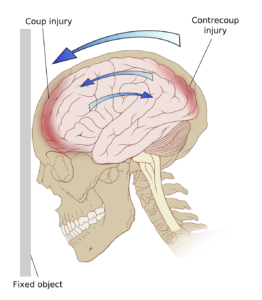- Celiac disease is also known as gluten-sensitive enteropathy is an inflammatory and autoimmune disorder of the small bowel occurring in individuals due to an abnormal immunological reaction to gluten. Gluten is a protein found abundantly in foods like wheat, barley, rye, and oats, etc.
- It causes damage to the mucosal lining of the small intestine and prevents it from absorbing nutrients from food leading to malabsorption and digestive problems.
Epidemiology
- Incidence: The condition occurs worldwide but is more common in northern Europe. The incidence rate is 1 in 100-300 population. Half of these people are asymptomatic
- Age: Celiac disease can present at any age. In adults, the disease usually presents during the third or fourth decade
- Sex: Females are affected twice as often as males.
Pathophysiology
- The precise mechanism of mucosal damage is not clearly understood
- Abnormal immunological responses to gluten produce toxins that damage the small finger-like protrusions called villi in the mucosal lining of the small intestine thus destroying the body’s ability to absorb nutrients from food. This results in serious health complications, such as malnutrition and permanent intestinal damage.
- There is a strong genetic association with around 10% of first-degree relatives, and approximately 75% concordance in monozygotic twins.
- There is a strong association with human leukocyte antigen (HLA)-DQ2/DQ8.
Clinical Features
GI symptoms | Non-GI symptoms | |
In children |
|
|
In Adults |
|
|
Disease associated coeliac with disease
Autoimmune associations | Other associations | |
Diseases Associated |
|
|
Dermatitis Herpetiformis
- Dermatitis herpetiformis is an autoimmune itchy blistering skin disorder related to celiac disease. It is caused by the deposition of IgA in the dermo-epidermal junction. It mainly affects external surfaces e.g. elbows, knees, and buttocks.
- Approximately 15 to 25 percent of people with celiac disease are affected by Dermatitis herpetiformis and they usually don’t experience any digestive symptoms. Skin biopsy can confirm this dermatological condition by detecting IgA deposition. But, for most of the cases, it can be clinically diagnosed.
- The rash usually responds to a gluten-free diet. But in refractory cases, Dapsone (100–150 mg daily) and topical Corticosteroid cream may help with itching.
Investigations
- Endoscopy
- Upper G.I endoscopy and biopsy to examine the intestines for damage to the villi. It is the gold standard test to diagnose celiac disease.
- Capsule endoscopy uses a tiny vitamin-sized capsule with wireless camera which is swallowed and travels through the digestive tract taking pictures of the small intestine that are transmitted to a recorder. While it cannot detect the villous pathology, it can be used to exclude other conditions.
- A skin biopsy in case of Dermatitis herpetiformis can show IgA deposition.
- Serological tests to detect Antibodies
- People with celiac disease often have high levels of Anti-endomysial antibodies (EMA) and anti-tissue transglutaminase (tTGA) antibodies.
- Antibody tests are a valuable screening tool but are not a diagnostic.
- In case of children, high-titre serology can be diagnostic without the need for endoscopy and biopsy.
- Anti-endomysial antibodies of the IgA class are detectable by immunofluorescence. They are 85–95% sensitive and (approximately 99%) specific for the diagnosis, except in very young infants.
- People with IgA deficiency are 10-20 times more likely to develop an autoimmune response to gluten and develop celiac disease and therefore they should be tested for IgG-tTG antibodies instead of IgA-tTG.
- Genetic testing for human leukocyte antigens (HLA-DQ2 and HLA-DQ8)
- Other routine tests-
- A full blood count may show microcytic or macrocytic anaemia from iron or folate deficiency and features of hyposplenism
- Serum electrolytes – iron, calcium, magnesium
- Serum total protein
- Serum albumin test
- Vitamin D
- Serum IgA to ensure an appropriate IgA response
- Bone density to look for evidence of osteoporosis, especially in older patients and post-menopausal women
Management
Diet
- A strict and lifelong Gluten free diet is the key management
- Exclusion of food containing gluten
- Intake of healthy, gluten-free foods like
- This allows healing of the intestinal villi to absorb nutrients properly
The following chart shows gluten free and gluten containing foods-
Gluten containing foods are
- Wheat
- Rye
- Barley
- Bulgur
- Durum
- Farina
- Graham flour
- Malt
- Semolina
- Spelt
- Triticale
- Initially oats (Oats may be re-introduced safely in most patients after 6–12 months)
Packaged foods should be avoided unless they’re labeled as gluten-free, such as-
- Beers, lagers, ales and malt vinegars
- Bread, cake, and other baked goods
- Cereals
- Pasta
- Candies
- Gravies
- Imitation meats or seafood
- Processed luncheon meats
- Salad dressings and sauces, including soy sauce
- Seasoned snack foods, such as tortilla and potato chips
- Seitan
- Self-basting poultry
- Soups
Gluten is sometimes hidden in certain foods, medications and non-food products, including:
- Modified food starch, preservatives and food stabilizers
- Prescription and over-the-counter (OTC) drugs
- Some Vitamin and mineral supplements
- Herbal and nutritional supplements
- Lipstick products
- Toothpaste and mouthwash
- Envelope and stamp glue
- Play dough
Mineral and vitamin supplements to correct existing deficiencies of micronutrients, such as-
- Copper
- Folate
- Iron
- Vitamin B12
- Vitamin D
- Vitamin K
- Zinc
- Glucocorticoids or immunosuppressive drugs if fail to respond adequately to a gluten-free diet
Dietary counseling
- Dietary counseling is required to make sure the diet is being observed, as the most common reason for failure to improve with dietary treatment is accidental or unrecognized gluten ingestion.
- It can be stressful and difficult to follow a completely gluten-free diet. Some ways to help cope with challenges are:
- Support from family and friends
- Proper education
- Finding a support group organizations such as the Celiac Disease Foundation, Gluten Intolerance Group, the Celiac Support Association and Beyond Celiac
Dietetic follow-up
- Patients should be followed up at regular intervals to ensure the response after initiation of a gluten-free diet
- Assessment of symptoms, weight and nutritional status should be done
- Blood should be taken for measurement of tTG or anti-endomysial antibodies
- Repeat small bowel biopsies are not required routinely but should be considered in patients whose symptoms fail to improve and those in whom antibody levels remain high
Prognosis
- Prognosis is excellent
- Symptoms improve within days to weeks after making dietary adjustments
- Children heal more quickly than adults
- The intestine usually heals in three to six months in children but may take several years in case of adults. Once the intestine is completely healed, the body will gain its ability to absorb nutrients properly
Complications
- Subfertility, unfavourable pregnancy outcomes
- Anaemia: iron, folate and vitamin B12 deficiency (folate deficiency is more common than vitamin B12 deficiency in coeliac disease)
- Cancer including
- Small bowel T-cell lymphoma
- Small bowel carcinoma and
- Squamous carcinoma of the oesophagus
- Ulcerative jejuno-ileitis
- Osteoporosis or osteomalacia
- Infertility and miscarriage in women
- Lactose intolerance
- Malnutrition
- Nervous system problems like seizures or peripheral neuropathy
- Pancreatic insufficiency
Causes of villous atrophy
- Celiac disease
- Tropical sprue
- Giardiasis
- Whipple’s disease
- Chron’s disease
- Radiation enteritis
- Tuberculosis
- HIV enteropathy



